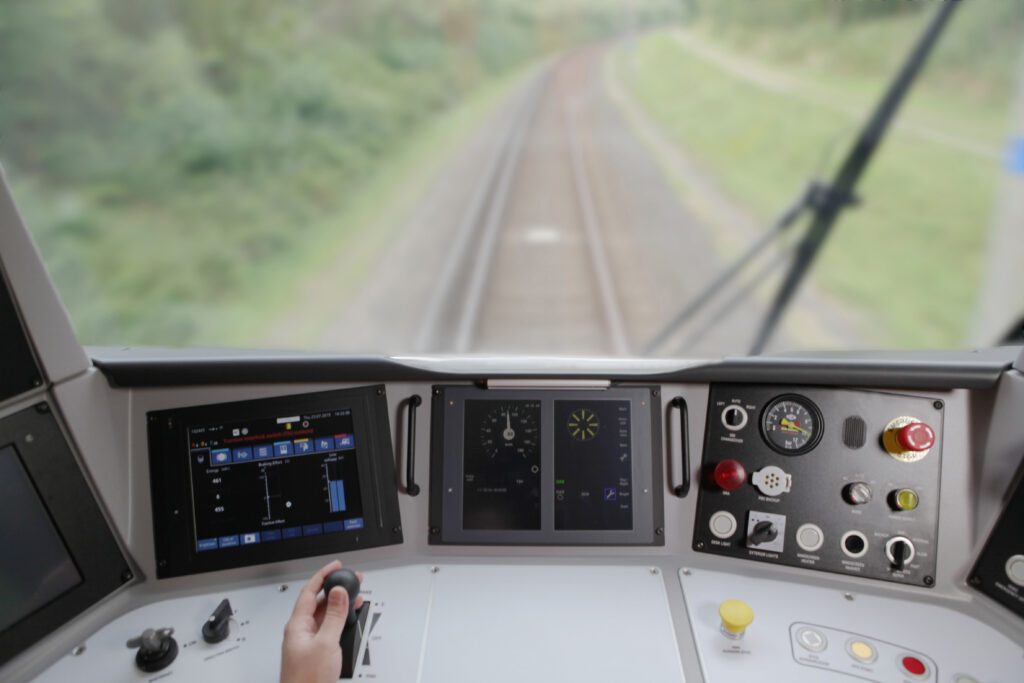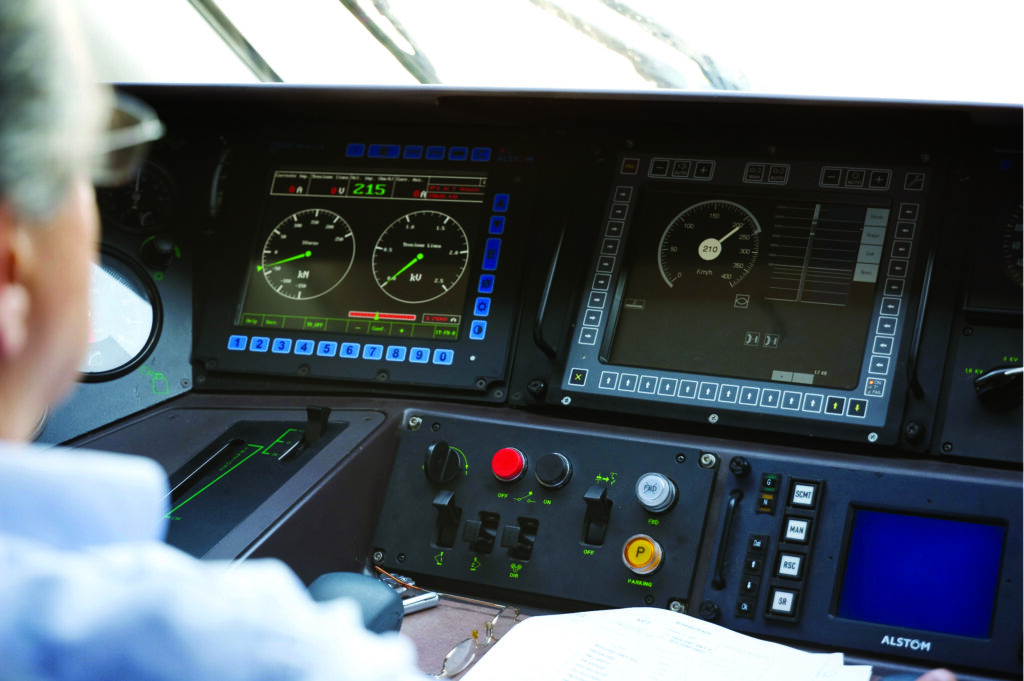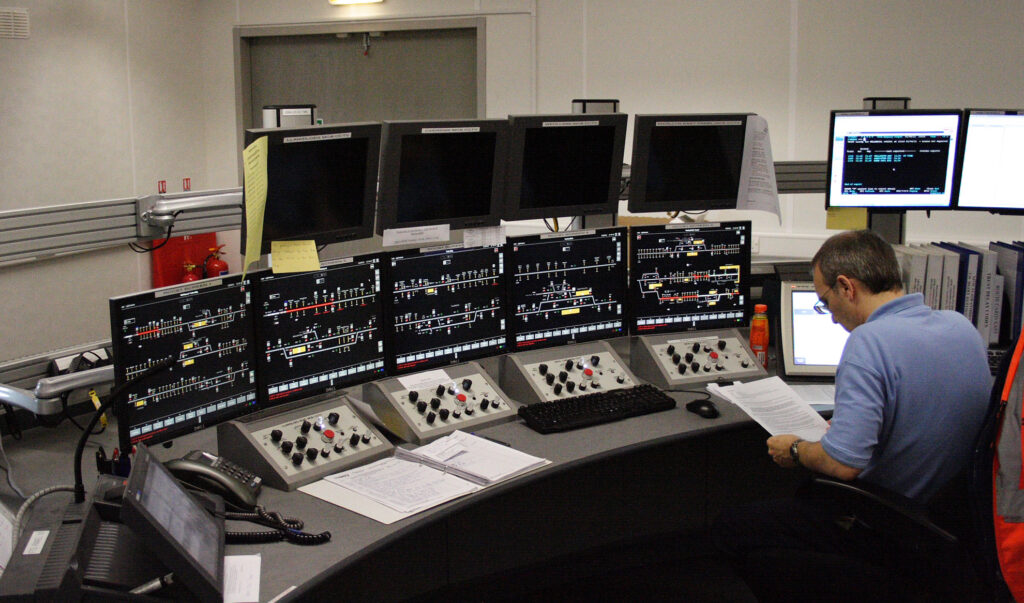The European Train Control System (ETCS) as a concept has been in existence for over 25 years with early trial systems in operation for 20 years. Many see ETCS as the solution to operational capacity constraints and a step change in signalling safety.
The publicity down the years has portrayed the system as the preferred technology for control of trains and the elimination of lineside signals. By now, one would expect it to have rolled out across many countries in Europe and the wider world, yet this is far from the case. Although a number of countries have committed to nationwide fitment by 2040 including Belgium, Czechia, Denmark, Finland, Germany, Italy, Ireland, Luxembourg, Norway, Sweden, and Switzerland, few of these are anywhere near completion. Many are encountering challenges in one way or another.
Other countries, with several outside of Europe, have some ETCS systems in operation including the UK. So why has the implementation been so slow and what are the prospects for speeding things up?
Points of view
Two different views are emerging, and it is hard to see whether these will ever converge. From an engineering perspective, the work is virtually complete and ETCS products can be purchased from several suppliers. Much time has been taken to reach this situation but with the hardware developed and the software now standardised, the signal engineering community can be proud of the achievement, even if at times it has seemed like rowing against the tide. The signal supply industry has existed for over 150 years and has a tradition of companies developing different ideology and products that compete for the railways’ signalling applications.
Although standards evolved to ensure that what the driver sees out of his cab is the same across a country, the means of setting the routes, lighting the signals, and moving the points is achieved by different technologies. Even today, despite attempts to produce a standardised computer interlocking viz. SSI in the 1980s as a collaborative venture between British Rail, Westinghouse (now Siemens), and GEC (now Alstom), the current computer designs are different across the supply companies.
Unlike telecommunications, where interworking to international standards is essential for survival, the signalling industry has not been able to produce products that can interwork together regardless of who manufactured them. In the UK, the introduction of modular signalling to make projects less costly developed with different technologies by the competing companies. A project known as EULYNX to create an IP-based standard for connecting interlockings to the outstations (object controllers) is progressing at an international level driven by the need to obtain a measure of standardisation. It may well become a requirement in future signalling procurement specifications.

From the signalling supplier’s perspective, EULYNX will not yield the same functionality that its proprietary systems provide, and it will be costly to justify the interface changes that will be needed without the backing of hard contracts. There is also concern about the cyber security protection within the EULYNX specification.
All this was supposed to change with ETCS and the demand for interoperability. The objective is for any train-borne equipment to be operationally compatible with all other train-borne equipment regardless of who supplied them. Similarly, the train-borne kit must be capable of working to the infrastructure and control systems again regardless of the supplier. It has been a long hard battle to get this understood, not helped by different countries having different operating rules and then demanding that ETCS be customised to minimise changes to these rules. However, over the 25 years various committees and working groups have established an acceptable outcome in order to achieve interoperability. The scene should therefore be set to roll out ETCS at an ever-increasing pace.
The UK strategy
Britain, like many other countries, has struggled to progress ETCS and, as a recent article in Rail Engineer on the digital railway portrayed, there have been many predictions on when the main lines would be equipped. Virtually none of these have been commenced, let alone reached fruition. A recent talk given to a group of retired senior railway managers by Network Rail’s Director, Industry Partnership for the Digital Railway, Toufic Machnouk, gave an insight into some of the challenges and how a realistic strategy will be achieved.
There is to be a Digital Railway Masterplan, key to which will be an industry partnership. It is admitted that the entire rail industry has struggled with strategic direction, particularly with creating the capability to deliver what is planned. A basic starting point is to question the purpose of signalling into the future. Lineside signals are considered an outdated technology to communicate with moving trains. Telecoms and radio permit the ‘signals’ to be moved inside the cab, which then tightens up the extremes of the railway. Once achieved, it should halve the signalling cost and reduce the embedded carbon.
Recent adverse press coverage has challenged the introduction of ETCS both in terms of technology and organisation especially when considering how UK operations, franchising, and private companies is structured. To try and understand these concerns, a set of principles has been established:
- Route renewals to be aligned with capital investment and through route transitioning;
- Establish an industry partnership including operational organisations;
- Design and deliver operational change;
- A user centric approach with a marriage of operations and engineering;
- New commercial models to be introduced with suppliers focussed on outcomes and performance.
These are intended to overcome some of the long-standing constraints that have plagued signalling industry procurement for decades, but nobody is under the illusion that changing past practices will be anything but difficult.
A signalling masterplan
When looking at the deployment of ETCS in the UK in the past, present, and in future, a masterplan has evolved into five stages:
Pilot stage – the Cambrian which was the early deployment in 2010/11.
Pathfinder stage – includes the Thameslink central core with ATO attached, plus parts of Crossrail and the soon-to-be-introduced Northern City Line from Finsbury Park to Moorgate. Covers the period 2020/24 and from these emerges a stable model for both technical and operational elements.
Pioneer stage – the migration of tens of organisations to understand and operate with digital signalling. Over the timescale 2018/28, it will require the deployment of assets to serve intercity, commuter, and freight operations including the fitting and retro fitting of rolling stock including yellow plant and even steam locomotives. During this stage, digital signalling will be commissioned between Welwyn and Hitchin on the ECML which will be the acid test for many of the issues associated with main line operation. Many debates are already underway as to how a multitude of distributed assets can be managed.
Portfolio stage – a long stage estimated to take between 2024 and 2034 to build up an industry for multiple route deployment.
Paradigm stage – route-wide introduction of ETCS based upon signalling renewal requirements. Already, many routes are being enabled for ETCS application particularly in and around the North West and including the southern end of the East Coast Main Line which is already committed, and from which a northward roll out will be a natural extension.
A number of searching questions emerged from the experienced audience present.
First, is the technology robust? Since ETCS now has a common specification, this gives better market propositions. ETCS is already deployed around the world with more in use outside of Europe than within it. The technology will update from time to time, but backward compatibility will be all important.
Second, where will the engineers and operators required to deliver the plan come from? Capability building will be all important. Key engineering expertise currently resides at Siemens, Thales, Alstom, Hitachi, and others. All will continue the development of skilled personnel through college and university training on an international basis, which will include spill over into the railway administrations and train companies.

Third, with the railways generally understood as belonging to the Government, how many of the proposals are underwritten? It is the idea that Great British Railways (GBR) will take on this role. The renewal strategy has been accepted in principle with Treasury backing. The trade unions are in support with ASLEF now promoting ETCS in its journal.
Fourth, the Danish experience found that retro fitting of rolling stock was a big problem, but what is the UK take on this? Fortunately, the massive provision of new rolling stock in recent years has helped as all new trains since 2012 are designed as ETCS ready. Where retro fitting is required, expertise is being built up at big centres like the large traction depot at Toton in the East Midlands. Interfacing with existing train systems is acknowledged as a big challenge.
Remember the radio
ETCS is a connected system between train and control centre. The means of achieving this is GSM-R, an international standard for track-to-train radio. Whilst successful, the radio technology is 2G which is a very outdated standard and has only limited life left in terms of manufacturer’s support. A new standard known as Future Rail Mobile Communication System (FRMCS) is under development and is being based on the current 5G standard. Not only will this give more efficient use of the bandwidth, it also gives greater cyber security.
Plans for adoption are underway, but the changeover will be a massive project taking several years and costing many millions of pounds. The current generation of train radios are capable of being upgraded to 5G operation but even this will require depot work. It is likely that the GSM-R and FRMCS infrastructure will be duplicated with trains working to whichever system is available along the routes. The predictions are that some radio spectrum in the 1.9GHz band will be made available as well as the existing GSM-R band around 880MHz. Having a higher frequency will mean additional base stations, all of which will mean capital expenditure.
Whilst ETCS and FRMCS are different projects they are interdependent. The slow UK roll out of ETCS is an advantage as few routes will require synchronisation of the two technologies. The timescale for the radio changeover is yet to be declared but it will likely be before the Signalling Masterplan is rolled out in any quantity. The leaders of both projects are aware of the need for close integration.
Where are the challenges?
Considering the debate in Scotland, is ETCS really the solution to the signalling renewals that have to be undertaken in future decades? It will depend on two factors – logistics and cost – and they are linked. To get an acceptable payback from ETCS introduction, much of the lineside equipment has to be dispensed with and this in turn means that all traction units including yellow plant operating over a route must be ETCS fitted. As noted, retro fitting trains is very expensive but with the new rolling stock provided over the past decade, having a fitted fleet is not the problem that it was originally thought to be. Another challenge has been the cost of equipping the ‘first in class’ which is disproportionally large for small fleets.
Operationally, the idea of having to produce captive fleets for particular routes is anathema. It has always had to happen to some extent in order to cater for weight restrictions, electrified or non-electrified, gauge clearances, and suchlike, but the ideal situation is that all trains are capable of going anywhere. Anything that worsens route availability will not be welcomed. With careful planning, the logistics issues can be managed.
The economics are complex in that whilst infrastructure costs will diminish, this has to be set against the cost of equipping the rolling stock (even if ETCS ready) with attendant maintenance costs and performance risks.
An ideal scenario for rolling stock is to produce an ETCS standard in-cab kit that can be plugged in to any cab with a standard power supply, a connection to the GSM-R (or successor) radio, and a link to an EP valve that activates the brakes if a movement authority is exceeded. Would this be a practical proposition?
Another recent instance that does not bode well, is the cost of modifying an ETCS equipped railway when infrastructure changes occur. The raising of a bridge near Machynlleth on the Cambrian line necessitated a change to the ETCS profile for that area. It required a software modification but the price for doing this was out of all proportion to the cost of the project.

Cost concerns
More important is cost. For ETCS to be welcomed, it must be cheaper than conventional signalling renewals. Sadly, at the moment, this is not a proven case. Signalling has long been a target for criticism in terms of its perceived high cost. The introduction of modular signalling in the last decade by both Siemens and Alstom has reduced the cost slightly (North Wales Coast, Crewe Shrewsbury, Ely Norwich, parts of Cornwall with more to come) but once again, the technology from the different suppliers is dissimilar, so any enhancements mean locking into the original provider. Not a good scenario.
Costs are measured against something called a Signalling Equivalent Unit (SEU) which attempts to count up all the signals, points, level crossings, and suchlike along a particular route and then divide this number by the route kilometres. It is a fairly crude measurement and clearly lines with a large number of tracks and close signal spacing will cost more. With ETCS, the infrastructure count will reduce as signals are no longer needed and thus the SEU should become cheaper. However, a recent estimate put forward for resignalling the Shrewsbury-Newport line with ETCS yielded an SEU at such a high price that the business case no longer stacks up for removal of the traditional signal boxes.
Thus, the evidence to date indicates that ETCS is more expensive than alternative signalling options. The reason may be that development and implementation costs are still on a learning curve, but the cost has to significantly reduce if resignalling with ETCS is to be the natural successor that everyone seems to desire.
The ETCS pundits admit that the system is not suitable for all lines and that concentration should be put on Inter City and dense suburban routes where the capacity gain benefits can be used to maximum advantage. The elusive ETCS Level 3, which at least in theory should eliminate track circuits / axle counters and enable moving block, remains a pipe dream mainly because the proving of freight train completeness still awaits a practical solution. The safety factors associated with providing mobile based train positioning information will be a challenge.
Looking ahead
So, where does this leave us? One has to have faith that the signalling masterplan will move forward and that by the early 2030s the roll out of ETCS will be in full swing. Much will depend on the ability to reduce the cost of infrastructure implementation and this will depend on a totally new business partnership between the signalling suppliers, Network Rail, and the future GBR.
Whilst interoperability is proven, dare one suggest that interchangeability between different suppliers’ kit might be a worthwhile objective? The formation of GBR will hopefully be the catalyst for all this to happen but changing the mindset of the signalling supply industry could be an uphill struggle.
One might wonder about the risk of obsolescence. With the roll out plan extending into the 2040s, will the present generation of ETCS equipment be obsolete before network wide coverage is achieved? It could be that renewing the first installations might be needed as part of the ongoing roll out programme. Sadly, those of us who look critically at the current situation will not live long enough to see whether these predictions come to fruition.

